Text

Boceto 🥰 Toshi modo gatito 🐱🐾
45 notes
·
View notes
Text
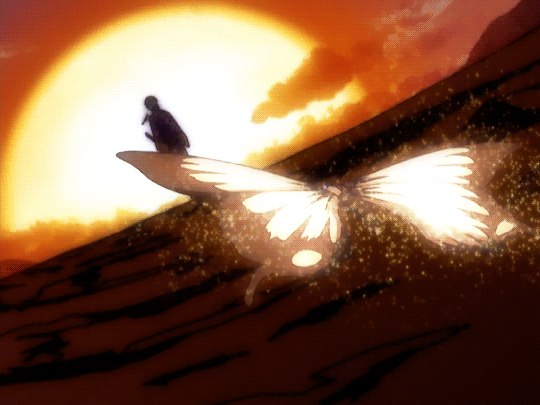
179 notes
·
View notes
Text

GinTae Week 2023
Day 1 - Ice Cream
25 notes
·
View notes
Text

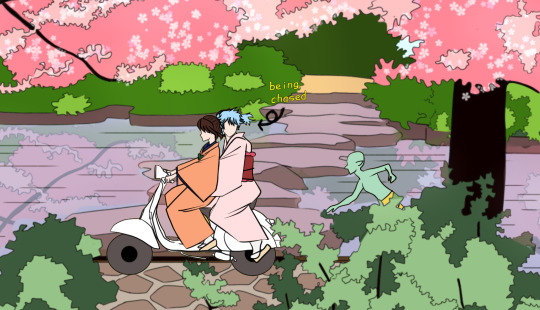
GinTae Week 2023
Day 2 - Partners in Crime
20 notes
·
View notes
Text

58 notes
·
View notes
Text
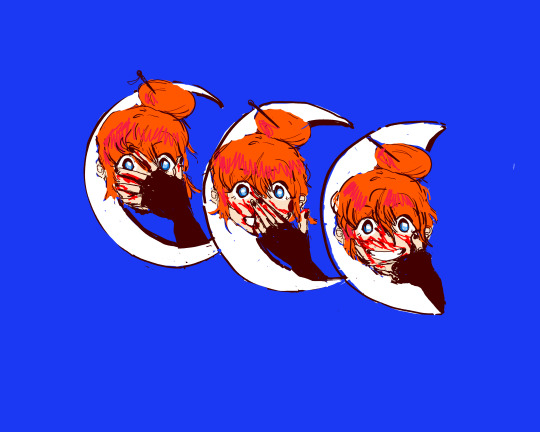
phases of the moon
13 notes
·
View notes
Text
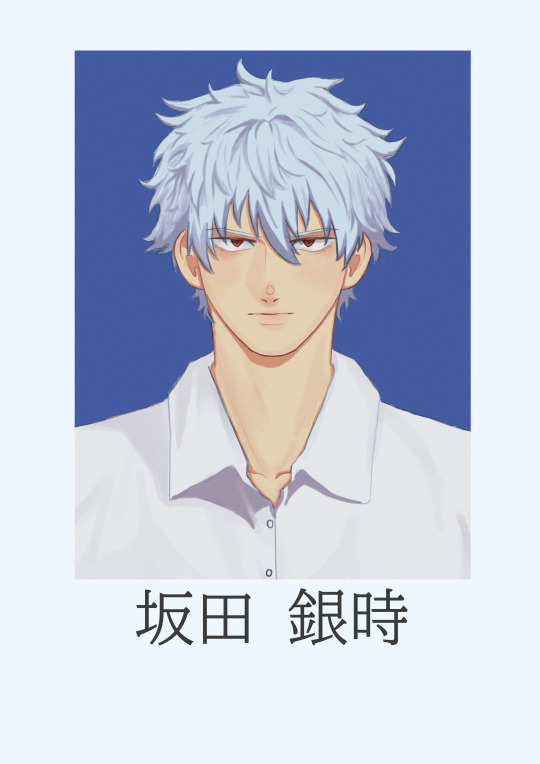

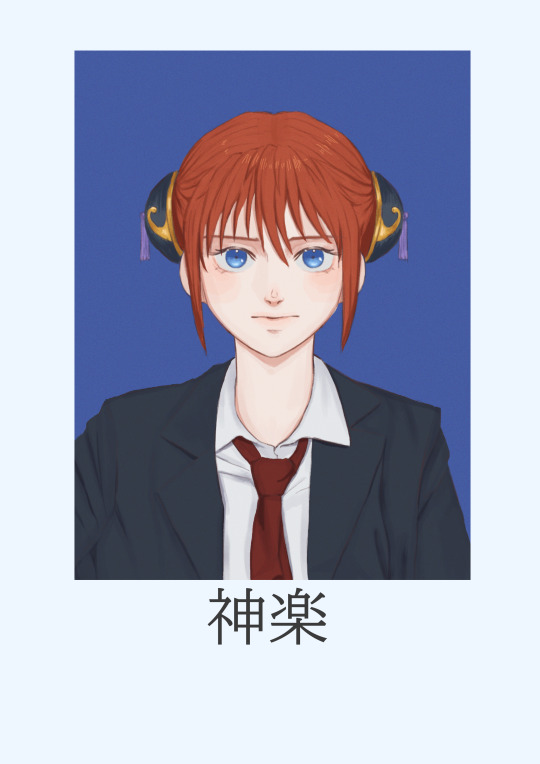
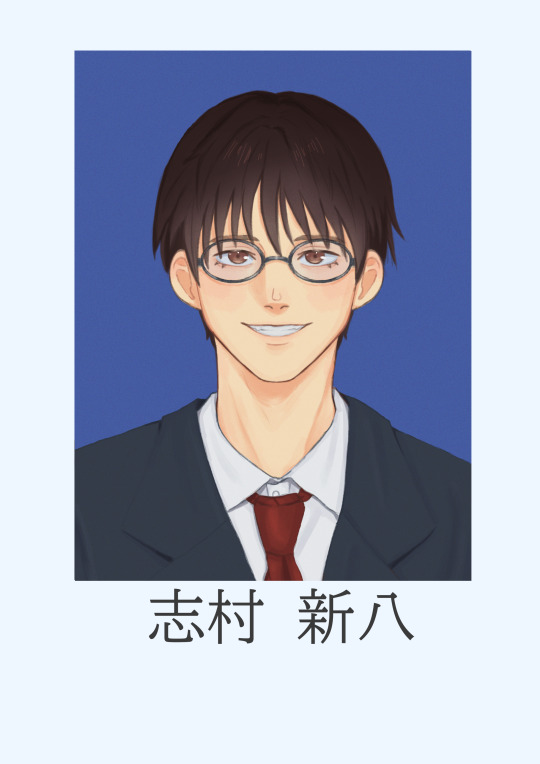
Gintama Yearbook?!
Added a teacher version to Gintoki too! Kagura having the same expression as Gintoki just cause she always does that and Shinpachi being the most pretty, polite boi ever
(completely experimental so my art style might change on the other characters soon)
49 notes
·
View notes
Text


106 notes
·
View notes
Text














Daenerys Targaryen and Arya Stark + parallels (1/?)
IGN: I know that Tyrion is your favorite character, right? Who’s your second favorite?
George R. R. Martin: Maybe Arya or Dany.
Freya Allan as book!Daenerys Targaryen and Rebecca Emilie Sattrup as book!Arya Stark
419 notes
·
View notes
Text

Continuing my lil series of drawing Daenerys using the actresses for laena- here’s dany at the end of ADWD
81 notes
·
View notes
Note
But that's not true, which was the point of me bringing up the ethnic homogeneity of Westeros. People of color are presented exclusively as savages, exotic subjects, or uncivilized entities, in the rest of the white viewpoints, be they the various Essosi that Tyrion, Victarion, Jon Connington, or Quentyn meet in their ADWD POV's, or the Summer Isles characters in Samwell's POV & the various King's Landing court POV's in ACOK/ASOS, the various Essosi (including Dothraki) that crop up from time to time, like the Brave Companions in Arya & Jaime's ASOS POV's, Taena of Myr in Cersei & Jaime's POV's, etc. The North is so ethnically and racially homogenous that two white Northern women––Jeyne Poole and Gilly––at two different occasions comment on being "scared" of Summer Isles people and their skin color. The AFFC prologue presents the acolytes and maesters of the Citadel as deploring Marwyn because he has the "audacity" to hang out with the exotic subjects of Essos. Leo Tyrell, Cersei, and Jaime use racial/ethnic epithets to refer to Essosi people. There are more examples, but these points are what immediately came to mind.
It's true that the way George has written the Dothraki, when compared to how he's written the Free Folk, is extremely orientalist, especially considering that they are presented as similar nomadic cultures with similar lifestyles and values. Yet Dany's POV remains the only one wherein a white character befriends people of color and presents a version of them beyond the "criminal" (e.g. the Dothraki members of the Brave Companions), "exotic" (e.g. Taena of Myr), or mystical sidekick. Yes, there is just as much racism and orientalism in how George has written those characters in Dany's arc, but those characters at least have underlying motivations and relevance that extend beyond Dany's arc. For instance, you will never see a character like Missandei in the other white POV's. You will never see nonwestern and nonwhite people take up a role in a military revolution in Westeros, aside from Dany's own people who will of course accompany her to Westeros. Even the "war for the dawn" is presented as a problem exclusively for the white Western characters.
The Qartheen and Ghiscari are white. If you're including the otherized white Easterner in the category of orientalized subject in ASOIAF, then this should include Daenerys and other Valyrians. Daenerys is the only minor in the series whom George repeatedly and explicitly sexualizes. He isolates her by writing about her breasts, genitalia, and body, in a very Otherizing manner, and puts her in explicit sexual situations that he does not with other young female characters. Indeed, the way he writes about Dany's body is similar to how he writes about Arianne's, who is a textual example of the exotic-erotic trope. The characters within the series also Otherize her, namely the Valyrian, Ghiscari, and other slaver & slaver-allied characters who speak about Dany's sexuality and body, and disparage her for her association with the Dothraki. Westeros isn't even accepting of ethnic Valyrians, as exemplified by a reactionary mob in King's Landing murdering the Pentoshi Rego Draz and blaming him for the spread of the Shivers, or Aegon III's court being hostile to Larra Rogare, for being a Lyseni polytheist who spoke Lyseni Valyrian. Thus I'm not sure why "Qartheen and Ghiscari" count as "people of color" in your estimation when they are white, because if we do such a calculus then Valyrians would have to be included as well, which I'm sure you'd be opposed to doing.
Missandei does have more characterization than you think she does. At the age of 10 she rises from an enslaved scribe to a Queen's scribe, handmaid, translator, and advisor, offering explicit advice to the Queen that becomes policy, being part of her inner court, treating with her diplomatic allies, directly offering her opinions to the Queen. Her relationship with Daenerys is warm, loving, and one of the only sources of comfort Daenerys has in Meereen. Melisandre of Asshai remains the only formerly enslaved POV character who rises from slave to de facto queen (other than Dany herself)––there is no Westerosi equivalent to Missandei's character. George could do much better with the characterization of Irri, Jhiqui, Jhogo, Aggo, Rakharo, Grey Worm, Strong Belwas, and several others, but all of them are not presented as dubious allies to Dany, but rather as people she fiercely loves and cares about, and who have seen her at her best and worst.
When it comes to the Dothraki in particular, Dany is the only person in the series who actually cares about what happens to them. The reason she is Otherized by Ghiscari and Valyrians for associating with them is because she adopts the Dothraki culture as her own. Yes, she was sold to and raped by a Dothraki man. There are also Dothraki men in Westeros, among the Brave Companions, who rape and murder women. Those white women do not affirmatively adopt Dothraki culture (nor would I expect them to; I don't subscribe to a racial identitarian framework in which "talking about bad things happening to a woman who happens to be white = white feminism") and, if we took out Dany's POV, we would never learn about anything regarding Dothraki culture other than its imperialist political economy. Yet Dany accepts the culture as her own and comes to genuinely love it, feeling at one with the Dothraki sea and land (a motif that is ubiquitous in her arc), loving horse riding in the Dothraki style, wearing bells in her hair in the Khal's style, worshipping the Dothraki Horse God (she is religiously syncretic, and really one of the only religiously syncretic characters in the text), engaging in Dothraki rituals like eating the heart of a stallion and bathing in the Womb of the World and doing so seriously, and protecting her tiny Khalasar for the entire series, no matter who tells her to abandon them. She mourns Quaro even in the fifth book. Her Khalasar matters to her. The Stallion prophecy, which the entire fandom deems scary and a portent of genocide, is actually a positive prophecy for the Dothraki because it entails a unity within their culture and their survival within the Long Night. And Dany loved her Dothraki-Targaryen child, who was ripped away from her. This mixing of cultures and religious and cultural syncretism present in her arc is simply not present elsewhere in the text, even Arya's POV, where the "ethnic and religious diversity" in Braavos is mostly white.
I question why you're calling her a white savior not because I disagree that there is orientalism present in her storyline but because your definition of white savior is ahistorical. The white savior framework, as popularized by Rudyard Kipling and other ideological arms of European imperialism in the 19th and 20th centuries, explicitly called for white western civilization to colonize the third world as a project of civilizing and enlightening the third world "savages." This is not what Dany is doing, despite analyses to the contrary. She's not introducing Valyrian/Western institutions of education, religion, or governance to Meereen, or the Dothraki. She's not enforcing her language upon them. She's not installing Valyrian/Western rulers, or local rulers as proxies for them, to disseminate Valyrian/Western values. She's not partitioning or carving up Meereen or the Dothraki sea by using demographic/anthropological "studies" to categorize people based on ethnicity. White saviorism has an actual definition beyond "white woman was raped by man of color = white feminism." In fact, Daenerys herself is Essosi, her ethnicity is indigenous to the continent, and she grew up in both a culture and a geopolitical context in which slavery is the norm. She herself had to rid herself of the internalization of that norm through a gradual process of political consciousness. This is not a case of an enlightened Westerner using civilization, or progress, as an excuse to plunder and colonize. Thus your assertion that she's a white savior is at odds with your assertion that she isn't an imperialist, for fundamentally white saviorism is the epistemological arm of western imperialism.
"There are no good rulers" is not GRRM's thesis––if it was, then he'd be a hypocrite for gearing toward an ending in which the Starks regain their feudal, noble power, and absolute authority over the North (an authority that is unelected, inequitable, and has no reparations or redistribution of land for the populations that the Starks and their ancestors genocided in order to obtain their land and dominion). Which of course he is one, I don't deny that, but "ruling is hard" isn't the same as "no good rulers." With the very quote that you mention, George specifically said /Daenerys/ is his answer to Aragorn, which doesn't exactly evince the idea that George is writing Dany as a bad ruler. Dany fails in ADWD because she tries to compromise with a reactionary slaveowning elite, an action that would of course end in failure because her personal revolutionary values, and her values of her people, clash with that of the Ghiscari hegemony. Yet Dany is the only POV character who affirmatively learns and puts into practice the widest range of ruling skills and tasks. For example, she's the only one who levies taxes not at starving serfs or fleeing refugees, but at slaveowning nobles and their wealth. This clearly has significant precedent and isn't just something George wrote to condemn her as a failure (otherwise it wouldn't be unique as the only type of tax a ruling noble has levied against the ruling class).
Absolutely she ends ADWD on failure. But you're incorrect that she doesn't reject the ruling status quo in Meereen. ADWD presents a dichotomy between the dragon and the harpy (a dichotomy that was actually established at the end of ASOS). The freedmen of Meereen deplore the would-be dragon slayer, Harghaz, while the slavers hail him a hero. The slaves of Volantis believe Daenerys is Azor Ahai, that her dragons are a symbol of glory, and that the Triarchs are aligned with darkness, while the slavers of Volantis believe she is a sinner whose biggest sin is clouding the water of slavery that spans the entire world (including Westeros). The slaves want Daenerys to smash the Yunkai'i, while the slavers see Dany's dragons as monsters. The sons of the harpy are represented by a mother (the harpy is a woman)––two maternal figures going against each other, mother of dragons vs. mother of the harpy's sons. Within Daznak's Pit, the slavers sit closest to the carnage, while the serfs, servants, and slaves sit highest up. This is why the slaves are unaffected by Drogon's wrath and the slavers are the only ones burned or killed. One slave even tells Tyrion that he sat to watch the slavers get eaten because he came to see a show. It was the slavers relishing on lowborn humans being killed and dictating the terms of the violence, until Drogon arrived and the slavers became the victims of violence instead.
This culminates in Dany's own actions and thoughts in the Pit:
Ten thousand throats roared out their thanks; then twenty thousand; then all. They did not call her name, which few of them could pronounce. "Mother!" they cried instead; in the old dead tongue of Ghis, the word was Mhysa! They stamped their feet and slapped their bellies and shouted, "Mhysa, Mhysa, Mhysa," until the whole pit seemed to tremble. Dany let the sound wash over her. I am not your mother, she might have shouted, back, I am the mother of your slaves, of every boy who ever died upon these sands whilst you gorged on honeyed locusts. Behind her, Reznak leaned in to whisper in her ear, "Magnificence, hear how they love you!"
… and folded. The dragon gave one last hiss and stretched out flat upon his belly. Black blood was flowing from the wound where the spear had pierced him, smoking where it dripped onto the scorched sands. He is fire made flesh, she thought, and so am I.
How is this not a rejection of the Meereenese status quo? It's a direct reclamation of her maternal identity, which she had compromised throughout ADWD:
Bless me, Dany thought bitterly. Your city is gone to ash and bone, your people are dying all around you. I have no shelter for you, no medicine, no hope. Only stale bread and wormy meat, hard cheese, a little milk. Bless me, bless me. What kind of mother has no milk to feed her children? – ADWD Dany VI
The Great Masters had used the pit as a prison. It was large enough to hold five hundred men … and more than ample for two dragons. For how long, though? What will happen when they grow too large for the pit? Will they turn on one another with flame and claw? Will they grow wan and weak, with withered flanks and shrunken wings? Will their fires go out before the end? What sort of mother lets her children rot in darkness? – ADWD Dany II
Daenerys chains her own children, her dragons, in the very pit that the Great Masters––slaveowners––imprisoned people. She is unable to save the refugees of Astapor and has to close the city gates to them. She fails both of her maternal identities, Mother of Dragons and Mhysa, as those are interconnected, which is why the author parallels her thoughts: what kind of mother lets her children rot in darkness, and what kind of mother has no milk to feed her children? Her dragons are isolated, angry, and alone, just as her people are hungry, suffering, and poor, because her compromises with the Meereenese elite distance herself from them. In ADWD Dany IX, however, she reclaims both of her maternal identities: she is fire made flesh, one with Drogon, and mother of the slaves and people. She is not a Harpy, and she is not the mother of Meereen. Her embrace of her draconic identity is inherently connected to her rejection of the Meereenese status quo.
Before Drogon's arrival, Dany does something monumental yet subtle that signifies this:
"Khaleesi?" Irri asked. "What are you doing?"
"Taking off my floppy ears." A dozen men with boar spears came trotting out onto the sand to drive the boar away from the corpse and back to his pen. The pitmaster was with them, a long barbed whip in his hand. As he snapped it at the boar, the queen rose. "Ser Barristan, will you see me safely back to my garden?"
The "floppy ears" are her Tokar, which her advisors cautioned her to wear so that she can align herself with Meereenese interests. Yet the Tokar is a slaver's garmet, a master's garment, a symbol of wealth and status. Dany donning the Tokar is a betrayal of her people, children, and values, forcing her to be a Harpy; by taking it off, running barefoot toward Drogon, she is rejecting the false peace and reclaiming her identity all in one. Where this will end up is her raining fire and blood upon the slavers of Meereen and Volantis, as she should have done instead of compromising. But she had to experience failure to understand the nuances of when to use violence, where to use violence, and how to use violence.
Indeed, the entire point of ADWD Dany X is showing her looking back:
Dany watched him go. When the sound of his hooves had faded away to silence, she began to shout. She called until her voice was hoarse … and Drogon came, snorting plumes of smoke. The grass bowed down before him. Dany leapt onto his back. She stank of blood and sweat and fear, but none of that mattered. "To go forward I must go back," she said. Her bare legs tightened around the dragon's neck. She kicked him, and Drogon threw himself into the sky. Her whip was gone, so she used her hands and feet and turned him north by east, the way the scout had gone. Drogon went willingly enough; perhaps he smelled the rider's fear.
This isn't just her running away from Meereen and seeking comfort with her son. Does she consider doing so? Yes, just as she considered running from her duty and settling down in Vaes Tolorro, back in ACOK. But while Dany thinks about how liberating it would be to live on the Dothraki Sea with drogon, eat horseflesh and live in the makeshift Dragonstone, she doesn't let herself accept the easy way out. That is why, rather than fleeing from Jhaqo's Khalasar, she stands with Drogon (as an equal) and faces the incoming Khalasar with him, which is exactly where the chapter ends.
Thus claiming that her failing in ADWD, or her being 14/15, or her being abused, naturally means that she's a bad ruler, doesn't conform to the themes of her storyline. Daenerys learns from every one of her failures. As an example, her failure to save Eroeh and the Lhazareen women is what leads her to understand that she has to conquer Astapor and execute the slaveowning nobles if she actually means to abolish slavery there. This is the next step within that process. While ASOIAF fans speak of abstract symbolism and scattered key words to support the idea that the other feudal noble POV's are "good rulers" with "good potential," Dany has concrete experience that concretely aligns with the rebuilding George wants to see in Westeros.
I take it you don't think of dany as an colonizer or imperialist either
I do not. She's not engaging in a project of colonisation in metropolis-colony terms, nor one of empire-building in the terms of late 19th, early 20th century construction of capital - which is what those words mean.
Is Dany's story laced with themes of white saviourism? Yeah, absolutely. Even if you don't think of her as *white*, the themes and imagery are still very much taken from orientalist fiction.
Is Dany a good ruler? Not really, and I think that the crux of her story in A Dance With Dragons is meant to mirror Jon's, of both of them failing their projects of power and retreating towards magic again after being touched by a whole book of counting beets and negotiating with the elites. Jon dies, and Dany is left stranded and captured by the khalasar. They are failure points, contrasting where they leave A Storm of Swords in triumph.
But she's not really starting up the British Empire or the Portuguese Ultramarine Empire in Meereen.
Oh, also. She's 14.
138 notes
·
View notes
Text
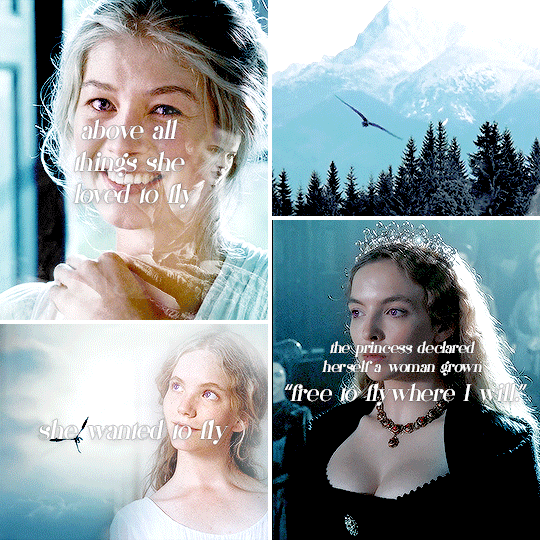

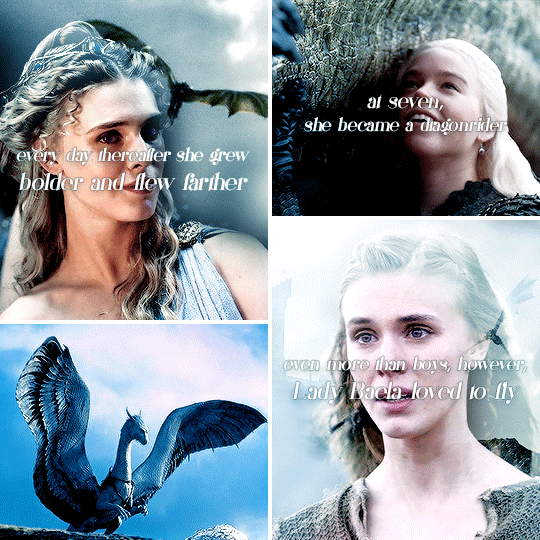
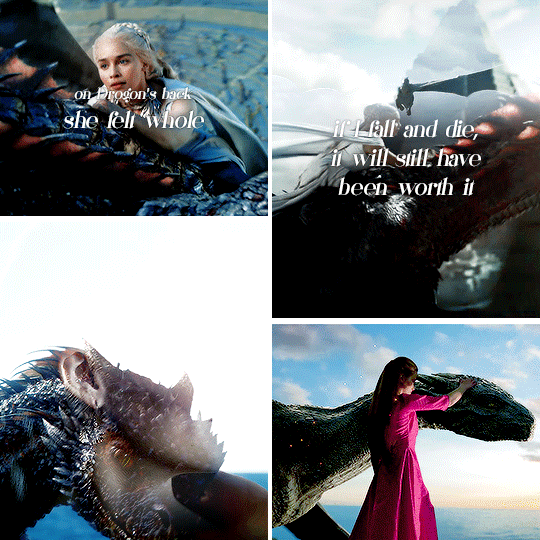
DAENERYS TARGARYEN APPRECIATION WEEK 2023
Day 6: House Targaryen → Targaryen Women + Love of Flying
Rhaenys the Conqueror
Rhaenys, youngest of the three Targaryens, was all her sister was not, playful, curious, impulsive, given to flights of fancy. No true warrior, Rhaenys loved music, dancing, and poetry, and supported many a singer, mummer, and puppeteer. Yet it was said that Rhaenys spent more time on dragonback than her brother and sister combined, for above all things she loved to fly. She once was heard to say that before she died she meant to fly Meraxes across the Sunset Sea to see what lay upon its western shores. Whilst no one ever questioned Visenya’s fidelity to her brother husband, Rhaenys surrounded herself with comely young men, and (it was whispered) even entertained some in her bedchambers on the nights when Aegon was with her elder sister. Yet despite these rumors, observers at court could not fail to note that the king spent ten nights with Rhaenys for every night with Visenya. - Aegon’s Conquest, Fire and Blood
Rhaena the Black Bride
At the age of nine, however, Rhaena was presented with a hatchling from the pits of Dragonstone, and she and the young dragon she named Dreamfyre bonded instantly. With her dragon beside her, the princess slowly began to grow out of her shyness; at the age of twelve she took to the skies for the first time, and thereafter, though she remained a quiet girl, no one dared to call her timid. Not long after, Rhaena made her first true friend in the person of her cousin Larissa Velaryon. For a time the two girls were inseparable…until Larissa was suddenly recalled to Driftmark to be wed to the second son of the Evenstar of Tarth. The young are nothing if not resilient, however, and the princess soon found a new companion in the Hand’s daughter, Samantha Stokeworth. - The Sons of the Dragon, Fire and Blood
~
Princess Rhaena had many a suitor as well, but unlike her brother she gave encouragement to none of them. She preferred to spend her days with her siblings, her dogs and cats, and her newest favorite, Alayne Royce, daughter to the Lord of Runestone…a plump and homely girl, but so cherished that Rhaena sometimes took her flying on the back of Dreamfyre, just as she did her brother Aegon. More often, though, Rhaena took to the skies by herself. After her sixteenth nameday, the princess declared herself a woman grown, “free to fly where I will.” - The Sons of the Dragon, Fire and Blood
Aerea Targaryen
Little and less need be said of the return of Rhaena Targaryen from Estermont after her daughter’s death. By the time the raven reached Her Grace at Greenstone, the princess had already died and been burned. Only ashes and bones remained for her mother when Dreamfyre delivered her to the Red Keep. “It would seem that I am doomed to always come too late,” she said. When the king offered to have the ashes interred on Dragonstone, beside those of King Aegon and the other dead of House Targaryen, Rhaena refused. “She hated Dragonstone,” she reminded His Grace. “She wanted to fly.” And so saying, she took her child’s ashes high into the sky on Dreamfyre, and scattered them upon the winds. - Jaehaerys and Alysanne: Their Triumphs and Tragedies, Fire and Blood
Alysanne Targaryen
The last years of Alysanne Targaryen were sad and lonely ones. In her youth, Good Queen Alysanne had loved her subjects, lords and commons alike. She had loved her women’s courts, listening, learning, and doing what she could to make the realm a kinder place. She had seen more of the Seven Kingdoms than any queen before or since, slept in a hundred castles, charmed a hundred lords, made a hundred marriages. She had loved music, had loved to dance, had loved to read. And oh, how she had loved to fly. Silverwing had carried her to Oldtown, to the Wall, and to a thousand places in between, and Alysanne saw them all as few others ever would, looking down from above the clouds. - The Long Reign: Jaehaerys and Alysanne: Policy, Progeny and Pain - Fire and Blood
Alyssa Targaryen
The princess was seldom long away from the Dragonpit after that day. Flying was the second sweetest thing in the world, she would oft say, and the very sweetest thing could not be mentioned in the company of ladies. The Dragonkeepers had not been wrong; Meleys was as swift a dragon as Westeros had ever seen, easily outpacing Caraxes and Vhagar when she and her brothers flew together. - The Long Reign: Jaehaerys and Alysanne: Policy, Progeny and Pain - Fire and Blood
Laena Velaryon
Though Princess Rhaenyra had been proclaimed her father’s successor, there were many in the realm, at court and beyond it, who still hoped that Viserys might father a male heir, for the Young King was not yet thirty. Grand Maester Runciter was the first to urge His Grace to remarry, even suggesting a suitable choice: the Lady Laena Velaryon, who had just turned twelve. A fiery young maiden, freshly flowered, Lady Laena had inherited the beauty of a true Targaryen from her mother, Rhaenys, and a bold, adventurous spirit from her father, the Sea Snake. As Lord Corlys loved to sail, Laena loved to fly, and had claimed for her own no less a mount than mighty Vhagar, the oldest and largest of the Targaryen dragons since the passing of the Black Dread in 94 AC. By taking the girl to wife, the king could heal the rift that had grown up between the Iron Throne and Driftmark, Runciter pointed out. And Laena would surely make a splendid queen. - Heirs of the Dragon: A Question of Succession, Fire and Blood
~
The Hightowers of Oldtown were an ancient and noble family, of impeccable lineage; there could be no possible objection to the king’s choice of bride. Even so, there were those who murmured that the Hand had risen above himself, that he had brought his daughter to court with this in mind. A few even cast doubt on Lady Alicent’s virtue, suggesting she had welcomed King Viserys into her bed even before Queen Aemma’s death. (These calumnies were never proved, though Mushroom repeats them in his Testimony and goes so far as to claim that reading was not the only service Lady Alicent performed for the Old King in his bedchamber.) In the Vale, Prince Daemon reportedly whipped the serving man who brought the news to him within an inch of his life. Nor was the Sea Snake pleased when word reached Driftmark. House Velaryon had been passed over once again, his daughter, Laena, scorned just as his son, Laenor, had been scorned by the Great Council, and his wife by the Old King back in 92 AC. Only Lady Laena herself seemed untroubled. “Her ladyship shows far more interest in flying than in boys,” the maester at High Tide wrote to the Citadel. - Heirs of the Dragon: A Question of Succession, Fire and Blood
Rhaenyra Targaryen
At the center of the merriment, cherished and adored by all, was their only surviving child, Princess Rhaenyra, the little girl the court singers dubbed “the Realm’s Delight.” Though only six when her father came to the Iron Throne, Rhaenyra Targaryen was a precocious child, bright and bold and beautiful as only one of dragon’s blood can be beautiful. At seven, she became a dragonrider, taking to the sky on the young dragon she named Syrax, after a goddess of old Valyria. At eight, the princess was placed into service as a cupbearer…but for her own father, the king. At table, at tourney, and at court, King Viserys thereafter was seldom seen without his daughter by his side. - Heirs of the Dragon: A Question of Succession, Fire and Blood
Baela Targaryen
“She is overly fond of boys,” the castellan wrote Baela’s father, Prince Daemon, after that incident, “and should be married soon, lest she surrender her virtue to someone unworthy of her.” Even more than boys, however, Lady Baela loved to fly. Since first riding her dragon Moondancer into the sky not half a year past, she had flown every day, ranging freely to every part of Dragonstone and even across the sea to Driftmark. - The Dying of the Dragons: Rhaenyra Triumphant, Fire and Blood
Rhaena of Pentos
During the first quarter of 135 AC, two momentous events were the occasion of great joy throughout the Seven Kingdoms of Westeros. On the third day of the third moon of that year, the people of King’s Landing woke to a sight that had not been seen since the dark days of the Dance: a dragon in the skies above the city. Lady Rhaena, at the age of nineteen, was flying her dragon, Morning, for the first time. That first day she circled once around the city before returning to the Dragonpit, but every day thereafter she grew bolder and flew farther. - The Lysene Spring and the End of the Regency, Fire and Blood
Daenerys Stormborn
Memories walked with her. Clouds seen from above. Horses small as ants thundering through the grass. A silver moon, almost close enough to touch. Rivers running bright and blue below, glimmering in the sun. Will I ever see such sights again? On Drogon's back she felt whole. Up in the sky the woes of this world could not touch her. How could she abandon that? - Daenerys X, A Dance with Dragons
~
Then all of that had faded, the sounds dwindling, the people shrinking, the spears and arrows falling back beneath them as Drogon clawed his way into the sky. Up and up and up he'd borne her, high above the pyramids and pits, his wings outstretched to catch the warm air rising from the city's sun baked bricks. If I fall and die, it will still have been worth it, she had thought. - Daenerys X, A Dance with Dragons
#queen rhaenys#rhaena the black bride#alysanne targaryen#aerea targaryen#alyssa targaryen#laena velaryon#rhaenyra targaryen#baela targaryen#rhaena of pentos#daenerys targaryen#house targaryen#asoiaf
236 notes
·
View notes
Note
The orientalism in her storyline is present in the entire work as a whole, as George Martin is a white American orientalist writer. This isn't unique to her arc. For instance, that Westeros is significantly racially segregated, ethnically and religiously homogenous, and presents a narrative of white European characters who hardly interact with a nonwhite/nonwestern arena, hardly inspires confidence in the white POV characters whose stories are grounded in Westeros. Moreover, while Dany is white, what specifically about her makes her a white savior? She is an ex-slave leading a revolutionary abolitionist war in which she redistributes wealth, affirmatively power shares with politically active freedmen, and arms, trains, and organizes politically militant freedmen. Slavers in ASOIAF can be white, like the Basilisk Isle raiders, Ghiscari. Ironborn, Northern noblemen, several mainland Westerosi factions and characters, and formerly, the Old Valyrians, or nonwhite, like the Dothraki, and the slaves are all from ethnically varied backgrounds. What is white savior about that?
As to whether Dany is a good or bad ruler, is there an example of a "good" ruler in the current narrative that you can think of, one who doesn't fail at their "project of power?" What is the definition of a good ruler, here? Someone who maintains the feudal-noble status quo and the material violence required to uphold "peace," perhaps even through feudal benevolence and paternalism, a la Ned Stark?
Magic permeates the series because it's, well, a fantasy novel. Daenerys reclaiming fire and blood, and her return to magic, is a symbol of her rejecting the false, reactionary Meereenese peace and the detrimental compromises she made with the Meereenese/Ghiscari & Essosi slaveowning nobility that chipped away at the antislavery revolution. George Martin isn't a dialectical materialist, and the thesis of ASOIAF is not a Marxist thesis of ideological demystification for the proletarian, serf, or peasant masses, so the binary you're proposing between ruling and magic doesn't apply. You can criticize George for falling into liberalism, but fantasy doesn't exactly lend itself to rigorous dialectical materialism to begin with.
I take it you don't think of dany as an colonizer or imperialist either
I do not. She's not engaging in a project of colonisation in metropolis-colony terms, nor one of empire-building in the terms of late 19th, early 20th century construction of capital - which is what those words mean.
Is Dany's story laced with themes of white saviourism? Yeah, absolutely. Even if you don't think of her as *white*, the themes and imagery are still very much taken from orientalist fiction.
Is Dany a good ruler? Not really, and I think that the crux of her story in A Dance With Dragons is meant to mirror Jon's, of both of them failing their projects of power and retreating towards magic again after being touched by a whole book of counting beets and negotiating with the elites. Jon dies, and Dany is left stranded and captured by the khalasar. They are failure points, contrasting where they leave A Storm of Swords in triumph.
But she's not really starting up the British Empire or the Portuguese Ultramarine Empire in Meereen.
Oh, also. She's 14.
138 notes
·
View notes
Text



DAENERYS APPRECIATION WEEK 2023
➣ Day 7: Speculation (Story Ending)
80 notes
·
View notes
Text

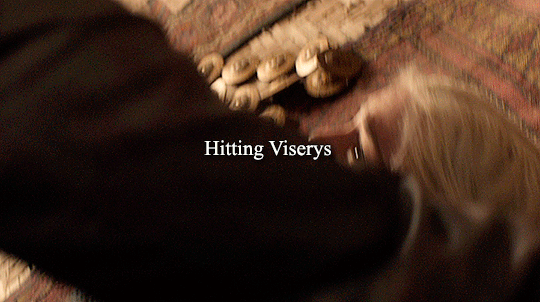








DAENERYS TARGARYEN APPRECIATION WEEK 2023
Day 3: Badass moments
427 notes
·
View notes
Text


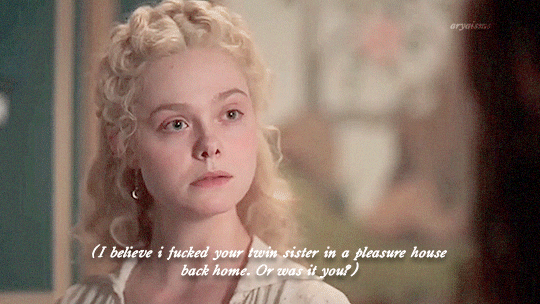

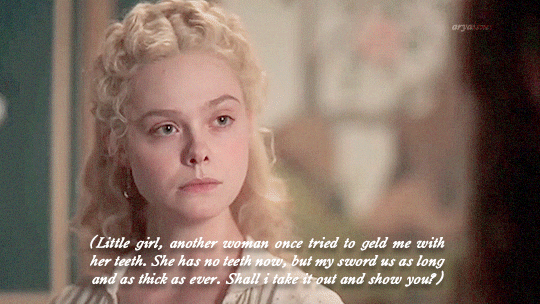
DAENERYS APPRECIATION WEEK 2023
➣ Day 3: Badass moments (keeping calm and collected in the face of adversity)
108 notes
·
View notes
